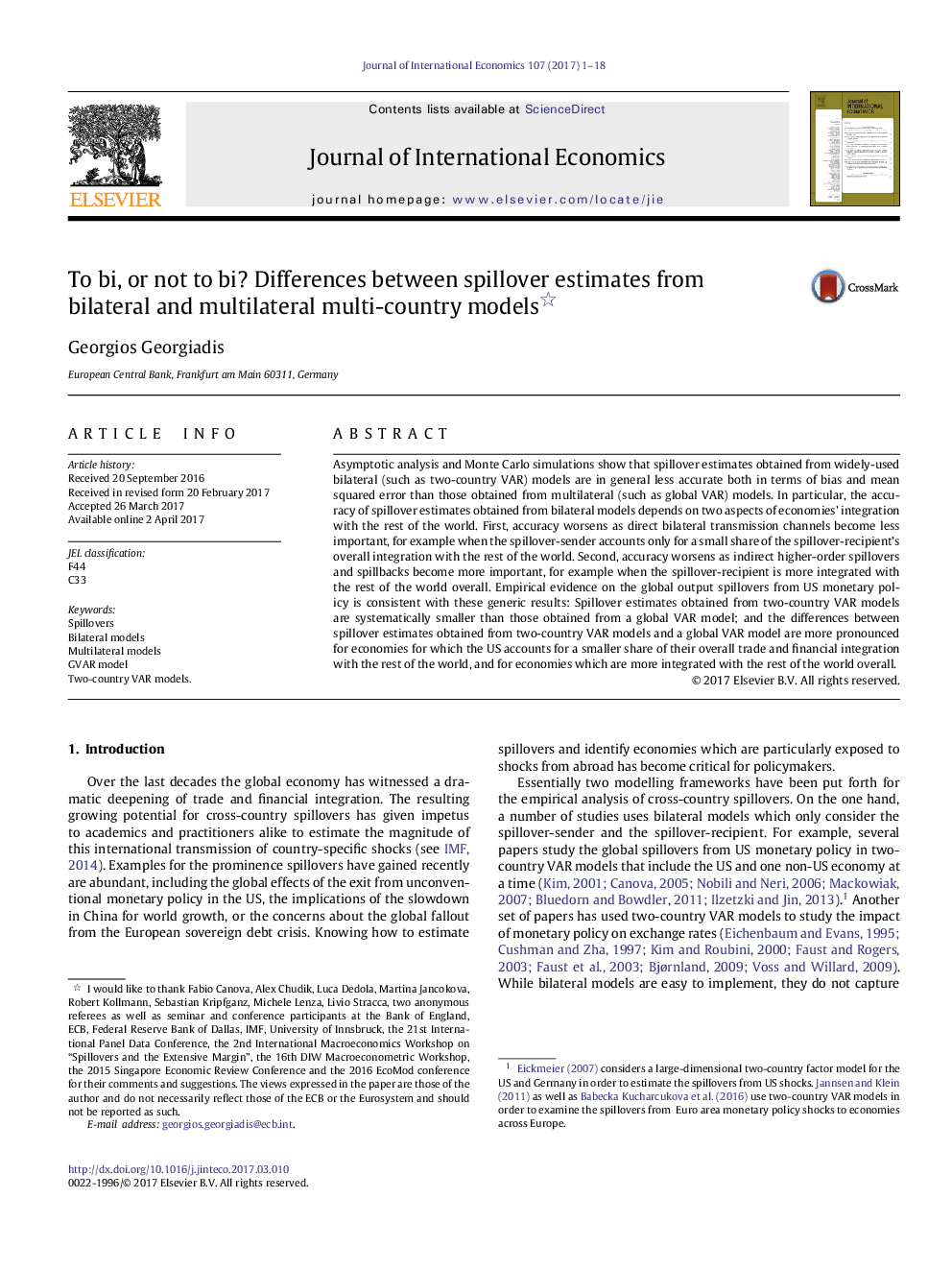| Article ID | Journal | Published Year | Pages | File Type |
|---|---|---|---|---|
| 5100879 | Journal of International Economics | 2017 | 18 Pages |
Abstract
Asymptotic analysis and Monte Carlo simulations show that spillover estimates obtained from widely-used bilateral (such as two-country VAR) models are in general less accurate both in terms of bias and mean squared error than those obtained from multilateral (such as global VAR) models. In particular, the accuracy of spillover estimates obtained from bilateral models depends on two aspects of economies' integration with the rest of the world. First, accuracy worsens as direct bilateral transmission channels become less important, for example when the spillover-sender accounts only for a small share of the spillover-recipient's overall integration with the rest of the world. Second, accuracy worsens as indirect higher-order spillovers and spillbacks become more important, for example when the spillover-recipient is more integrated with the rest of the world overall. Empirical evidence on the global output spillovers from US monetary policy is consistent with these generic results: Spillover estimates obtained from two-country VAR models are systematically smaller than those obtained from a global VAR model; and the differences between spillover estimates obtained from two-country VAR models and a global VAR model are more pronounced for economies for which the US accounts for a smaller share of their overall trade and financial integration with the rest of the world, and for economies which are more integrated with the rest of the world overall.
Keywords
Related Topics
Social Sciences and Humanities
Economics, Econometrics and Finance
Economics and Econometrics
Authors
Georgios Georgiadis,
